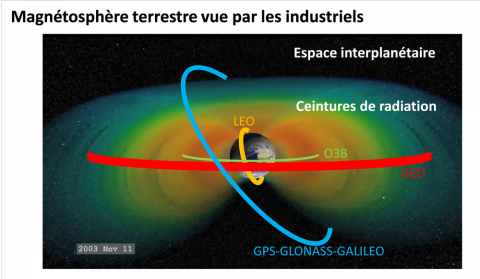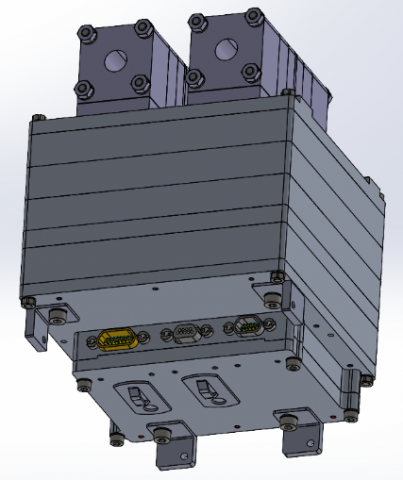Energetic charged particles such as electrons (keV to 10’s MeV) and protons (keV to 100’s MeVs) are trapped by the Earth’s magnetic field in the so-called Van Allen or radiation belts. Such particles are mostly produced by solar activity and the dynamics observed in the radiation belts may be extreme, enhancing the radiation level (in terms of charged particles fluxes) of several orders of magnitude in a few hours. All the satellites orbiting the Earth as well as our ground systems are subject to these ionizing particles and induced effects. For instance, the radiations belts are spread out between an altitude of 400 and 50 000 km where most of the satellites operate. In such an environment, the ionizing particles interacting with the electronic components can generate punctual events caused by a single particle or cumulative long-term radiation effect. These effects can lead to malfunctioning or even complete failure of spacecraft systems and/or subsystems.
To get a better understanding and mapping of these energetic particles, ONERA and ISAE-SUPAERO partners of the Toulouse University Space Center (CSUT) [1] collaborate to the CREME (Cubesat Radiation Environment Monitoring Experiment) mission. ONERA is responsible for the ONERAD instrument, designed to monitor the highly energetic electrons and protons trapped in the radiation belts. This instrument is based on the proven designs of typical solid-state detection head such as NGRM (ESA) and ICARE-NG (CNES) [2]. Developed for large missions and with an industrial philosophy they can cover a wide energy range of particles. ONERAD, on the other hand, intends to provide complementary results with a gain in compactness (1.25 U), mass (1.4 kg) and power consumption (< 4 W) by focusing its measurements on chosen sections of the energy spectrum.
ONERAD is a first step in a new area of radiation monitors and is expected to demonstrate how it can be complementary to instruments currently acquiring data. With a set of tools already developed at ONERA, such as data assimilation [3], the measurements from these different sources are combined together to provide a more accurate picture of the dynamics of the radiation belts for Space Weather applications.
The ONERAD instrument is designed with two detection heads composed of different shielding layers and sensors sensitivity. The variation of materials and thickness provides ONERAD the ability to measure protons in the range 2.5-150 MeV and electrons in the range 700 keV–2 MeV. The current objective is to reach and achieve the Engineering Model by the end of 2022.
The development has been made possible thanks to industrial partnerships (3D-PLUS, EREMS and TRAD), as well as strong internal support from ONERA itself. FEDER and “Région Occitanie” are funding this project as well as ONERA and ISAE-SUPAERO themselves.
The 3U Cubesat platform is developed, built and tested in collaboration with ISAE-SUPAERO and U-Space, a French startup based in Toulouse.
| Radiation belts illustration (left), and ONERAD mechanical design (right). Credits: NASA (left) and ONERA (right). | ||
[14] CSUT website : https://www.csut.cnrs.fr/en/
[15] D. Boscher et al., In Flight Measurements of Radiation Environment on Board the French Satellite JASON-2 A Proton Sensor for Energies From 2 to 20 MeV, IEEE Transactions on Nuclear Science, vol. 58, no. 3, pp. 916-922, June 2011, doi: 10.1109/TNS.2011.2106513.
[16] Bourdarie, S. A., & Maget, V. F. (2012). Electron radiation belt data assimilation with an ensemble Kalman filter relying on the Salammbô code. Annales Geophysicae-Atmospheres Hydrospheresand Space Sciences, 30(6), 929, https://doi.org/10.5194/angeo-30-929-2012


